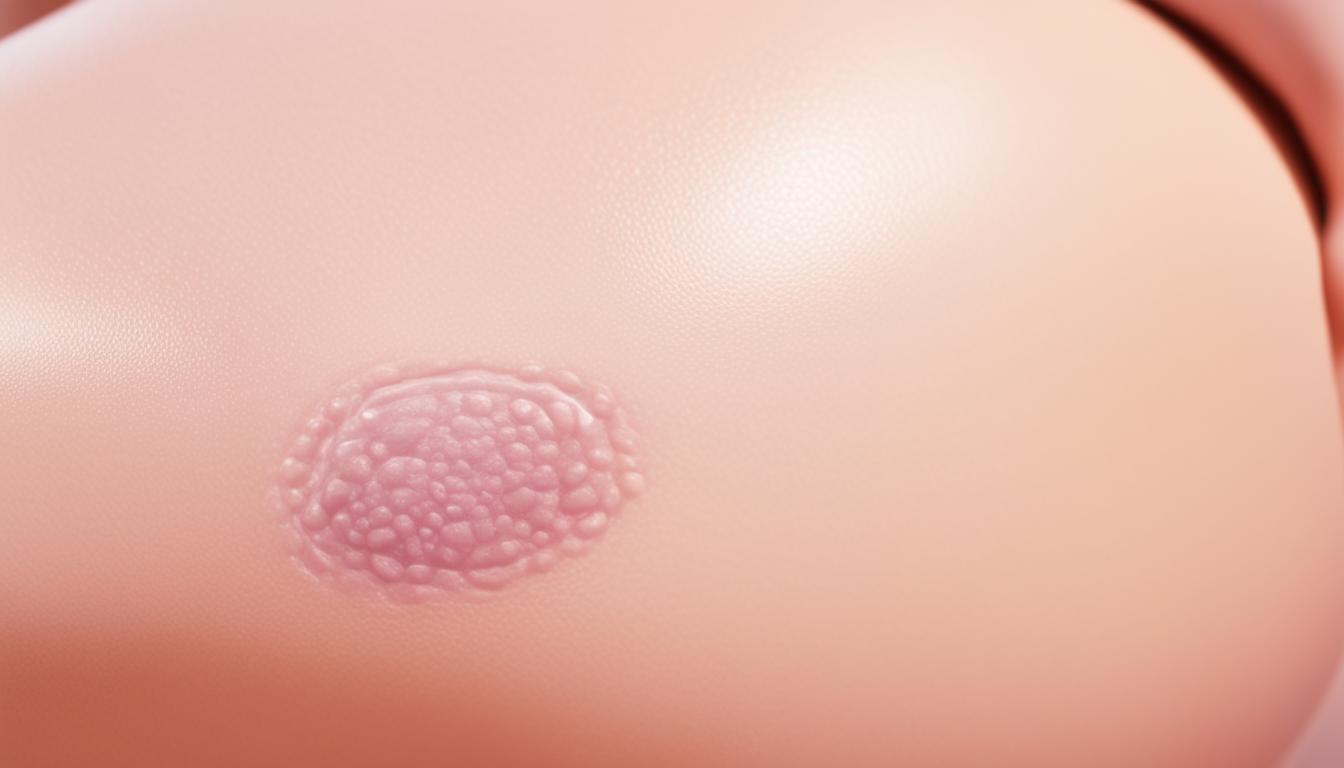Almost 90% of women have cellulite. It makes the skin look uneven with a texture like “orange peel” or “cottage cheese.” This is most often seen on the buttocks and thighs. Cellulite happens when fat cells push through connective tissue, making the skin look dimpled.
Many factors can lead to cellulite, not just weight gain. These include your genes, not being active enough, retaining too much fluid, lack of water, hormone shifts, poor collagen, a bad diet, smoking, living a certain way, being too heavy, and getting older. To avoid cellulite, try to live healthily by exercising regularly and eating well.
Doctors usually find cellulite during a skin check. Treatments for cellulite might involve using QWO injections or laser therapy. Other possible options are subcision, vacuum treatments, sound wave therapy, and caffeine or retinol creams.
Key Takeaways:
- Cellulite is a common condition that affects the majority of women.
- It is characterized by the appearance of uneven, lumpy skin.
- Cellulite can be caused by various factors, including genetics, lack of physical activity, and hormonal changes.
- Maintaining a healthy lifestyle and seeking appropriate treatment options can help manage cellulite.
- Stem cell therapy is an emerging treatment for cellulite.
Symptoms of Cellulite
Many people, especially women, deal with cellulite. It causes certain symptoms that make it easy to spot.
-
Dimpled Skin Texture
One big sign of cellulite is uneven skin texture. It looks like the skin has an “orange peel” or “cottage cheese” texture. This often shows on the buttocks and thighs, but can be elsewhere too.
-
Loss of Skin Elasticity
Having cellulite often means less skin elasticity. It makes the skin look saggy or loose. This can make cellulite more noticeable and hurt someone’s self-confidence.
-
Sagging or Loose Appearance
Cellulite can cause your skin to sag or look loose in places. This might make folks self-conscious and want to find ways to treat it.
Although cellulite isn’t a big health concern, it can deeply affect mental health. The way it looks can make people feel bad about themselves. Many look into ways to treat cellulite and feel more confident.
It’s key to know the signs of cellulite to find solutions. Whether you choose to get help from a pro or look into self-care, managing cellulite’s symptoms can boost how you feel inside and out.
Causes of Cellulite
Cellulite is not simple; it’s a mix of different things. Knowing what causes cellulite is key to stop or treat it. Let’s look at what leads to cellulite:
1. Genetic Inheritance
Your genes decide if you might get more cellulite. How fat is stored and how tissues sit can be from your family. So, if your family has cellulite, you might get it too.
2. Lack of Physical Activity
Not moving much or skipping exercise can up your cellulite risk. When muscles are weak, they can’t hold up tissues well, showing more cellulite. Moving more can help avoid this.
3. Fluid Retention and Dehydration
Keeping too much fluid or not drinking enough water can both lead to cellulite. Pressure from too much fluid can push tissues to the skin surface, making cellulite stand out. And without water, your skin can’t look healthy and smooth.
4. Hormonal Changes
Hormones, like those in puberty, pregnancy, or menopause, can change your body, affecting cellulite. These changes might weaken the skin’s support, making cellulite more likely.
5. Weak Collagen Structure
Collagen keeps your skin strong and stretchy. But if it’s weak, skin can’t stay smooth, and cellulite is more visible. Even young women can have weak collagen.
6. Unhealthy Lifestyle Factors
Bad habits can make cellulite worse. Eating poorly, smoking, stressing a lot, not sleeping enough, or wearing tight clothes can hurt your skin. These things mess with blood flow, how much collagen you make, and skin health overall.
7. Being Overweight
While not just a weight issue, being too heavy can show more cellulite. Extra fat presses against skin, making tissue and cellulite more noticeable.
8. Aging
Getting older makes your skin thinner and less bouncy. This makes cellulite more obvious. Plus, your body makes less of what it needs to keep skin smooth, like collagen.
To fight cellulite, you need to change things in your life, use treatments, and take good care of yourself. Knowing what causes it helps you pick the right habits to keep cellulite away.
Stem Cell Therapy for Cellulite
Stem cell therapy is a new and promising way to tackle cellulite. It uses stem cells’ natural healing power to fight cellulite. The process aims to fix damaged connective tissue, making the skin smoother and less bumpy.
An example is the QWO injectable, cleared by the FDA for cellulite. It injects collagenase into the butt dimples, targeting cellulite spots specifically. Other treatments include lasers, subcision, and using creams with caffeine and retinol. These methods work to break up clumps of collagen, boost skin’s flexibility, increase collagen making, and lessen cellulite look.
For many, cellulite causes insecurity. But now, with stem cell treatments and other options, there’s hope. Meeting with a health expert can help find the right choice for fixing cellulite. They’ll offer smart advice based on individual needs.

